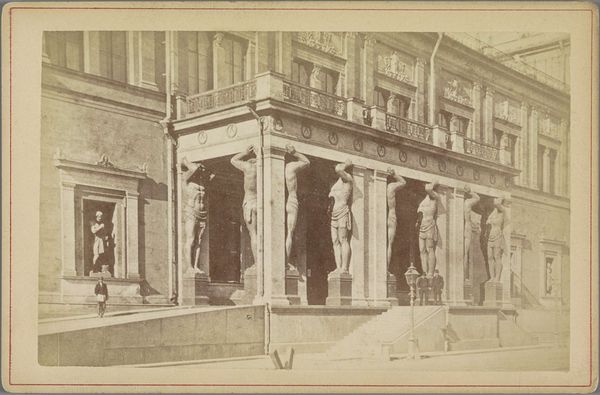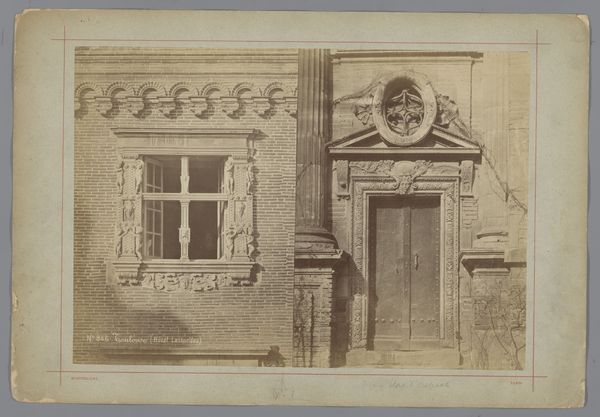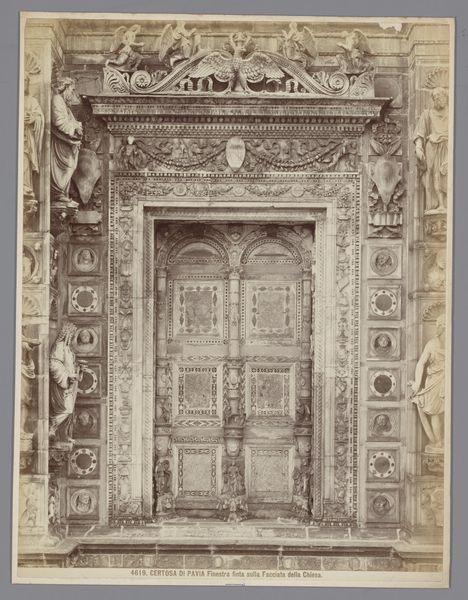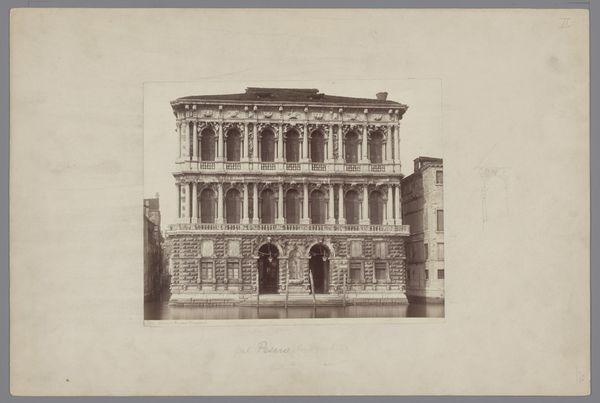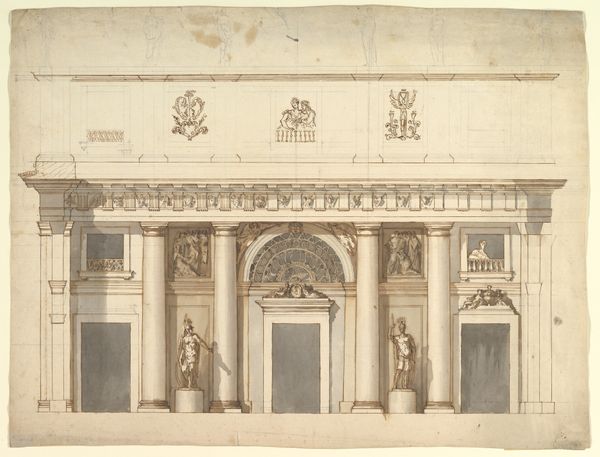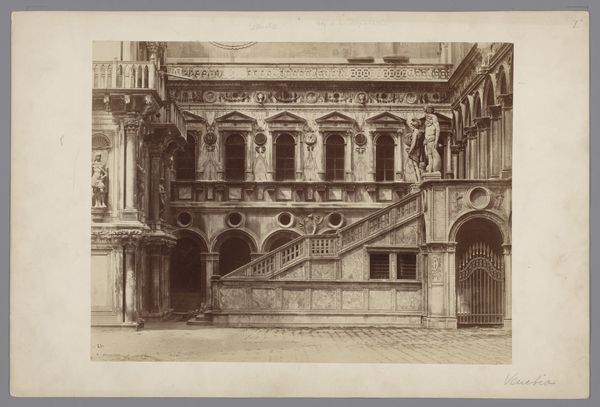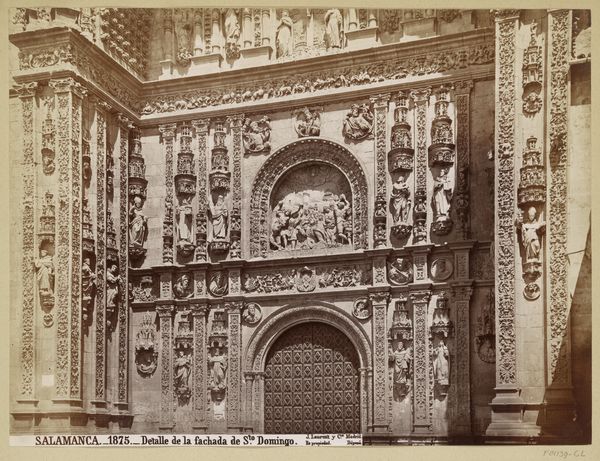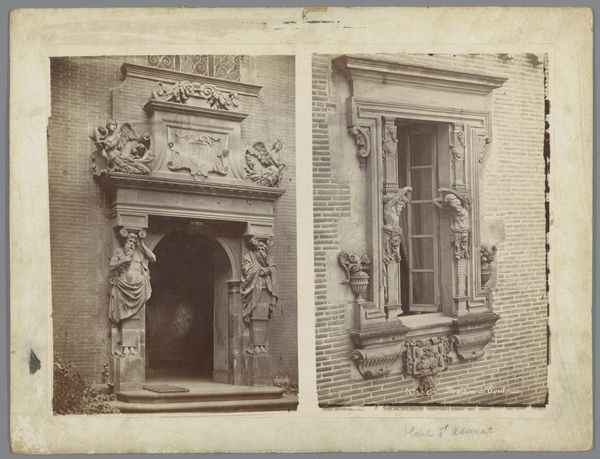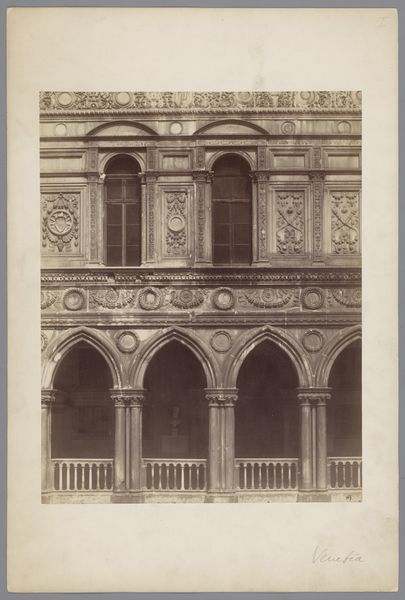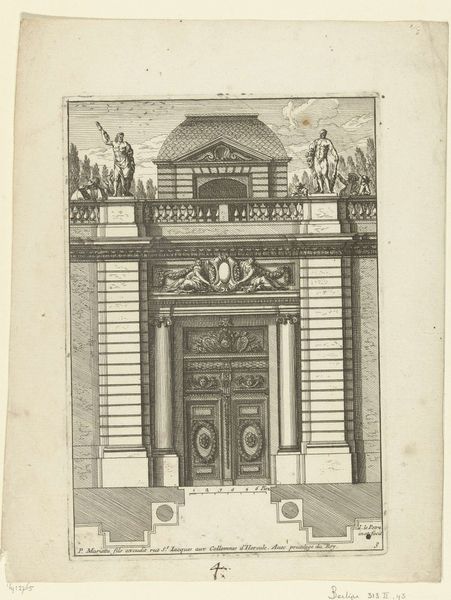
Gedecoreerde ingang van de Durga Mandir, een tempel gewijd aan godin Durga, te Ramnagar 1863 - 1866
0:00
0:00
print, relief, photography, architecture
# print
#
asian-art
#
relief
#
landscape
#
photography
#
carved into stone
#
ancient-mediterranean
#
paper medium
#
architecture
#
statue
Dimensions: height 243 mm, width 299 mm, height 250 mm, width 309 mm
Copyright: Rijks Museum: Open Domain
Curator: The density of detail in this photograph is extraordinary. I'm immediately drawn into the incredible intricacy of the carved facade. Editor: I agree. Let’s dive in. We’re looking at a print titled "Decorated Entrance of the Durga Mandir, a Temple Dedicated to Goddess Durga, in Ramnagar," captured between 1863 and 1866 by Samuel Bourne. It showcases the temple’s entrance, a marvel of relief work dedicated to the Hindu goddess Durga. Curator: The symmetry is what strikes me first, it feels carefully constructed. You can see a clear hierarchy in the placement of the figures. How does the Durga Mandir function within its community? Editor: The Durga Mandir would have served as the locus of devotion and a vital community center in Ramnagar, reflecting Durga’s power as the slayer of evil. Bourne's choice to document it highlights its religious and social significance in the landscape. The British documented everything as an administrative technique to keep tab of what was happening in the regions of power, right? Curator: Precisely. Durga embodies potent feminine energy. Those depictions of her riding her lion feels charged. How does this symbol work within the greater Hindu narrative? Editor: In Hindu mythology, Durga's lion represents power, will and determination, virtues necessary to conquer evil. But also suggests an individual's need to overcome their own ego. I can sense that in the composition. What I also find relevant is how Bourne captured the ancient qualities, while being relatively close in time with the ancient Durga. Curator: Absolutely, there's a continuous visual lineage there. It's the iconography that truly anchors it in time. That continuity transcends political context. Looking at those carefully chiseled details of the statues brings me peace and a profound feeling of cultural history. What would you say? Editor: For me, considering its era and colonial context is vital. This photo humanizes a powerful cultural moment, and reminds me how socio-political backdrops play an active role. I can’t help wonder if Bourne, intended a political agenda for capturing Durga. Food for thought, no? Curator: Indeed. This intersection between social narrative and powerful iconography is an active and engaging thought.
Comments
No comments
Be the first to comment and join the conversation on the ultimate creative platform.
